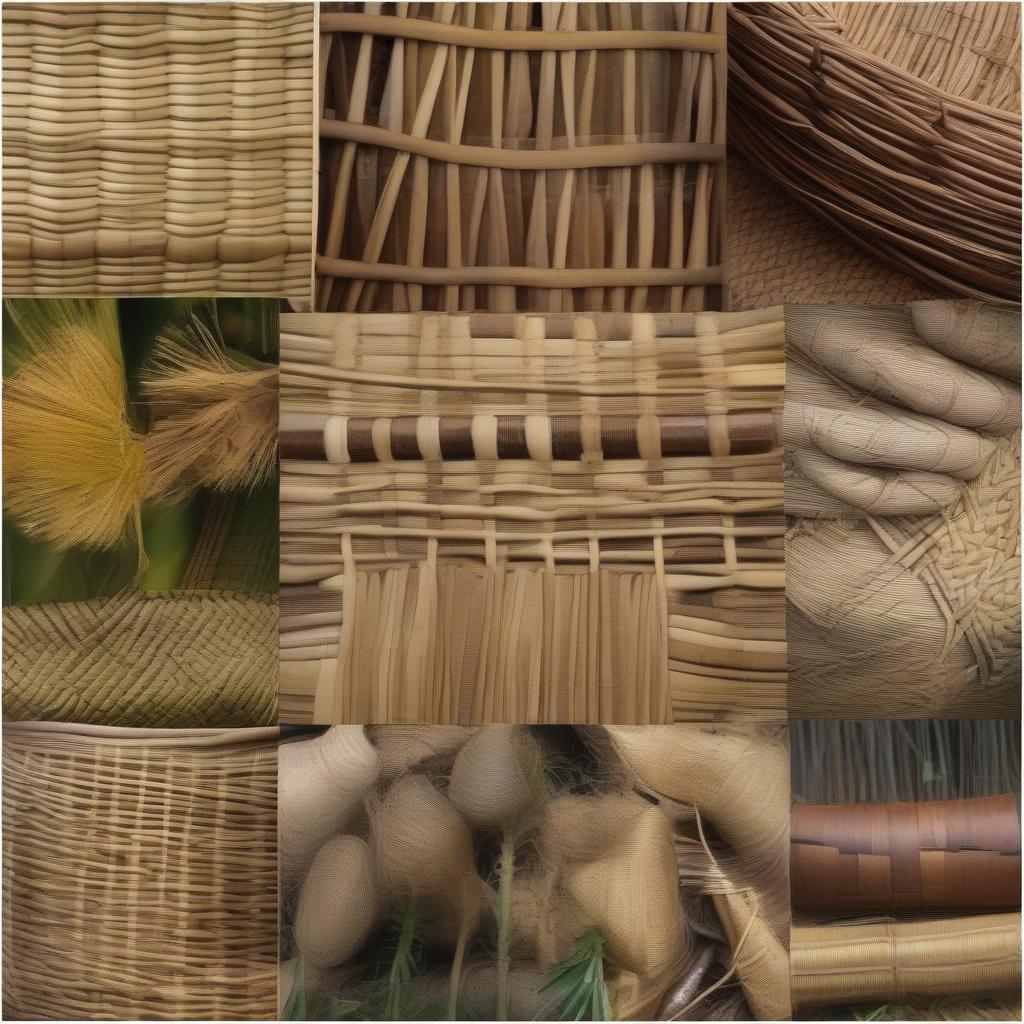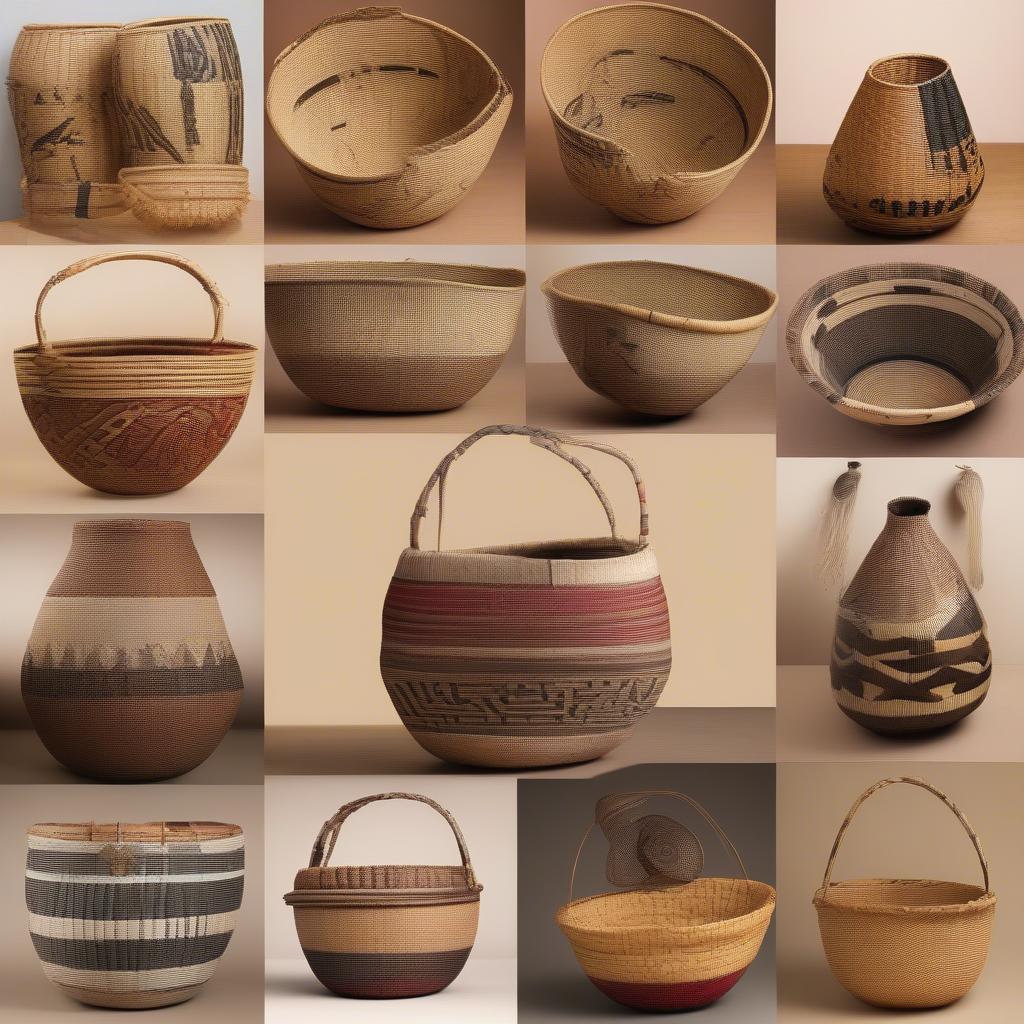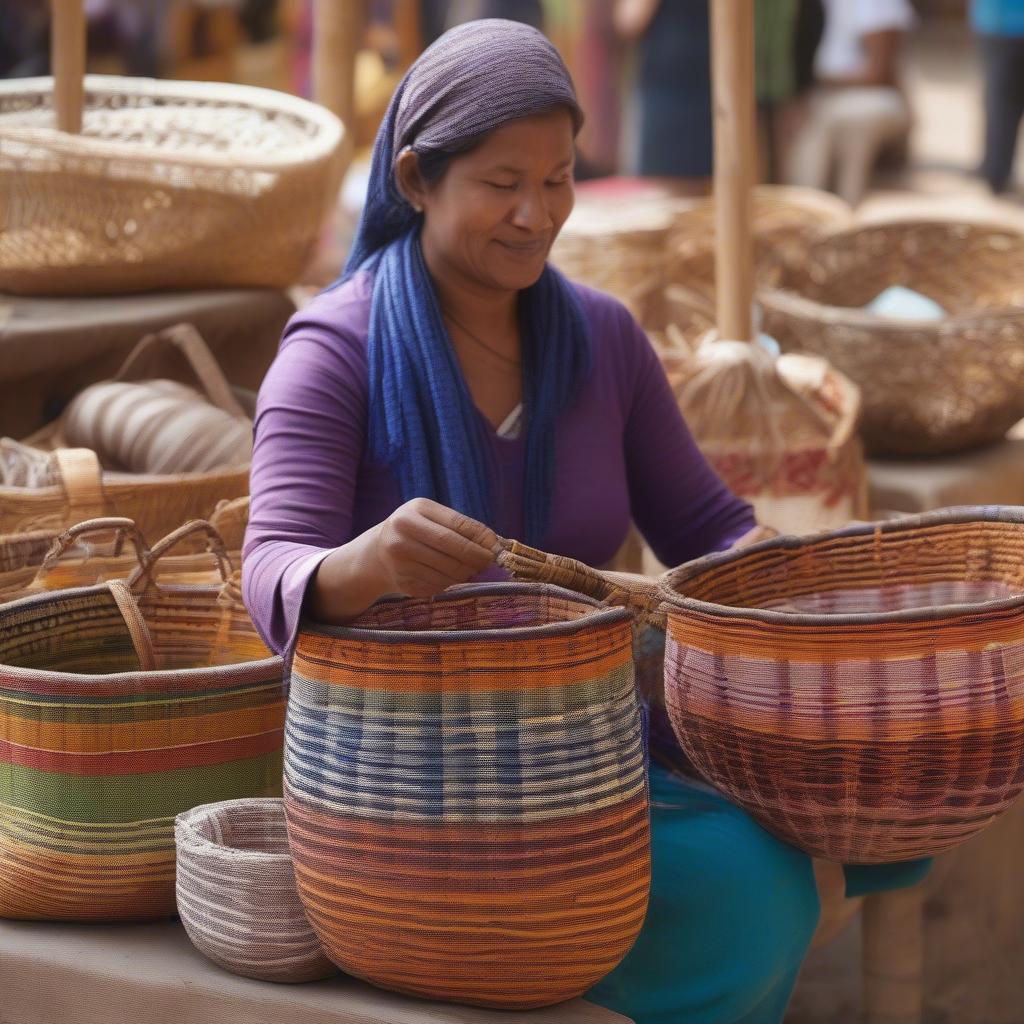Basket Weaving
Traditional African Basket Weaving: A Rich Tapestry of Culture and Craft
Traditional African Basket Weaving is more than just a craft; it’s an art form deeply intertwined with the cultural heritage of diverse African communities. For centuries, these woven masterpieces have served practical purposes, from storage and transportation to ceremonial and artistic expression. Learn more about this ancient practice and discover its beauty and significance. about traditional african basket weaving
The Significance of Traditional African Basket Weaving
Basket weaving in Africa isn’t merely about creating functional objects. It’s a testament to the rich cultural narratives, traditions, and artistic ingenuity passed down through generations. Each basket tells a story, reflecting the unique identity of the weaver and their community. From the intricate patterns to the vibrant colors, every detail is imbued with meaning.
Materials and Techniques in African Basketry
Traditional African basket weaving employs a variety of locally sourced materials, reflecting the diverse landscapes of the continent. Grasses, reeds, palm leaves, and even recycled plastics are skillfully manipulated using techniques unique to each region. Some baskets are coiled, others are twined, and still others are plaited, each method producing a distinct aesthetic.
 Traditional African Basket Weaving Materials
Traditional African Basket Weaving Materials
Symbolism and Storytelling in African Baskets
Many African baskets are adorned with intricate patterns and vibrant colors, each carrying symbolic meaning. These symbols can represent anything from ancestral spirits and clan affiliations to proverbs and stories. By understanding these symbols, we gain insight into the rich cultural tapestry of the communities that create them.
Regional Variations in Traditional African Basket Weaving
Across the vast continent of Africa, basket weaving traditions vary significantly. From the tightly woven baskets of the Zulu people in South Africa to the colorful, patterned baskets of the Bolga weavers in Ghana, each region boasts its own unique style and techniques. Exploring these regional variations offers a fascinating glimpse into the diverse artistic expressions found across Africa.
 Regional Variations in African Basket Weaving
Regional Variations in African Basket Weaving
Zulu Ilala Baskets: Strength and Functionality
The Zulu people of South Africa are renowned for their ilala baskets, known for their strength and durability. These baskets are traditionally woven from ilala palm leaves and are used for a variety of purposes, from storing grain to carrying water.
Bolga Baskets: Vibrant Colors and Intricate Patterns
The Bolga baskets of Ghana are instantly recognizable for their vibrant colors and intricate patterns. Made from elephant grass, these baskets are dyed using natural pigments and often feature geometric designs that reflect the weaver’s creativity. women weaved baskets in africa
Preserving the Legacy of Traditional African Basket Weaving
In a world increasingly dominated by mass-produced goods, preserving the legacy of traditional African basket weaving is crucial. Supporting artisan communities ensures that these ancient skills and cultural traditions continue to thrive for generations to come.
Supporting Fair Trade Practices
Purchasing fair trade baskets ensures that the artisans receive fair compensation for their work, empowering them to continue their craft and support their families. This also contributes to the preservation of cultural heritage and sustainable economic development.
 Supporting Fair Trade African Basket Weaving
Supporting Fair Trade African Basket Weaving
“Traditional African basket weaving is a powerful expression of cultural identity and artistic skill,” explains Dr. Abena Ofori, an expert in African art and culture. “By supporting these artisans, we are not just buying a beautiful object; we are investing in the preservation of a rich cultural legacy.”
Conclusion: A Timeless Craft with a Modern Relevance
Traditional African basket weaving continues to captivate with its beauty, functionality, and cultural significance. By appreciating the artistry and supporting the artisans who keep this tradition alive, we can ensure that this timeless craft continues to flourish in the modern world. basket weaving artist or artisan Remember, each basket is a testament to the rich cultural heritage of Africa, a story woven into every strand.
FAQ
-
What materials are used in traditional African basket weaving? A variety of natural materials are used, including grasses, reeds, palm leaves, and sometimes even recycled plastics.
-
What is the significance of the patterns on African baskets? The patterns often hold symbolic meaning, representing clan affiliations, ancestral spirits, or traditional stories.
-
Where can I buy authentic African baskets? Look for fair trade retailers or directly support artisan cooperatives to ensure ethical sourcing.
-
How can I learn more about traditional African basket weaving? youtube basket weaving instructions
-
Are there different types of African basket weaving techniques? Yes, there are various techniques including coiling, twining, and plaiting, each resulting in a unique basket style.
-
What is the difference between a Zulu ilala basket and a Bolga basket? Zulu ilala baskets are known for their strength and durability, while Bolga baskets are characterized by their vibrant colors and intricate patterns.
-
How does supporting fair trade help African basket weavers? Fair trade practices ensure that artisans receive fair wages for their work, empowering them to continue their craft and support their communities.
“The intricate patterns and vibrant colors of African baskets are a testament to the creativity and skill of the artisans,” says Kwame Nkrumah, a renowned basket weaver from Ghana. “Each basket is a unique piece of art, carrying with it the spirit of our culture.”
Need support? Contact us at Hanoi, Vietnam or Tech Avenue, Suite 12, San Francisco, CA 94105, USA. We have a 24/7 customer service team.
